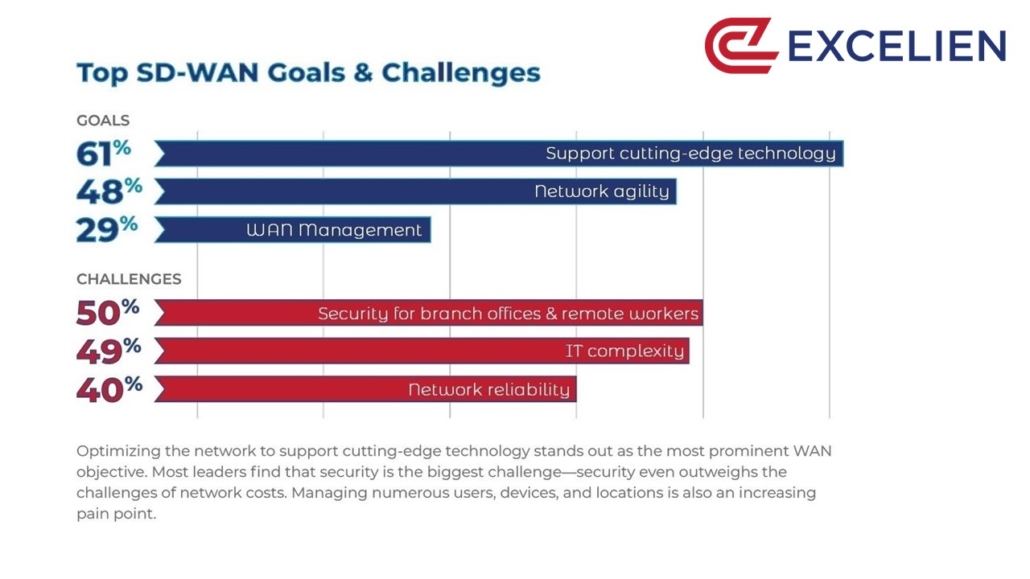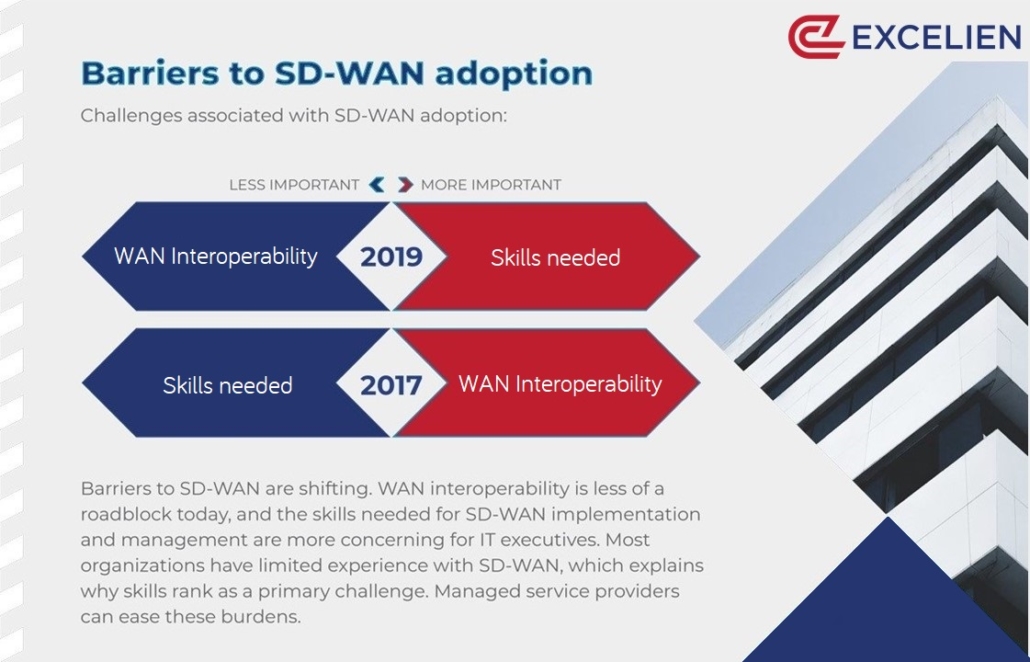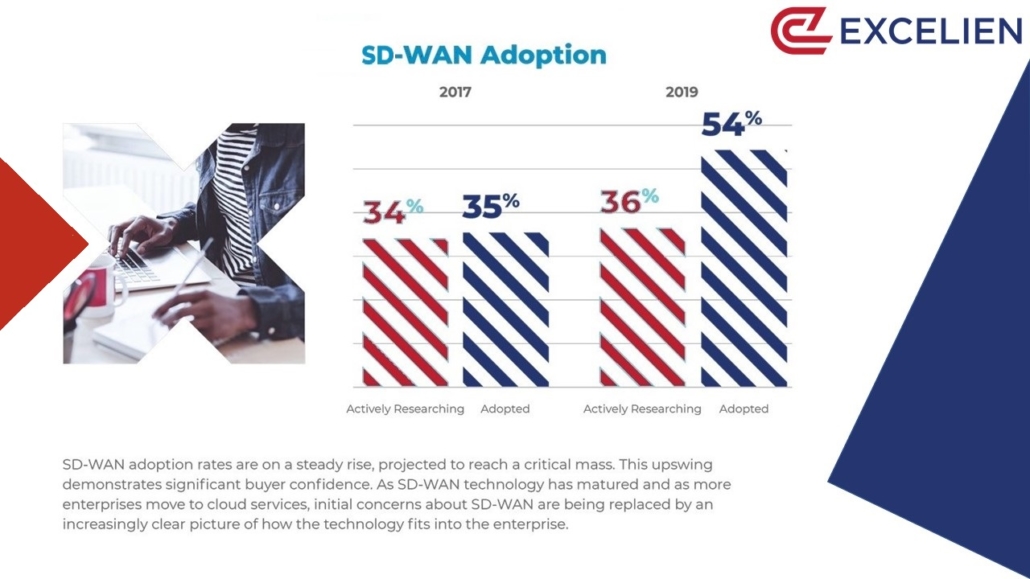If your company has a presence across multiple locations, the term SD-WAN should have come across your desk.

As companies move away from traditional compute to the Internet and the cloud, the conventional way of building WANs has become outdated. Costs for MPLS have been too expensive, service configuration commonly known for their poor punctuality and lengthy deployments. Companies have had over-compensate on their capacity, or limit performance due to inadequate bandwidth.

SD-WAN acts to address the problem with smart routing for the right application. This is achievable as SD-WAN creates a virtual overlay over the underlying data services, distributing the upper protocol stack from the network. All networks have some independence from the underlying data service. It’s what allows us to run IP across Ethernet as efficiently as we do across MPLS.

Benefits of SD-WAN
1) Business Efficiency
Deployment timescales are drastically reduced with the agile deployment of WAN services, such firewall and bandwidth. This means sites with no IT staff can roll-out services to branches without local IT staff. Companies can also benefit from enhanced agility with the capability to increase and reduce bandwidth based upon demands without the need for lengthy configurations, more often than not with the click of a button.
2) Commercial Rational
SD-WAN delivers firms an added layer of reliability, assuring that internet connectivity (cable, DSL, and Ethernet) is widely accessible and fast to roll-out. This can be achieved at a margin of the cost of a similar MPLS circuit, delivering a secure and reliable WAN service which is inexpensive and within constrained budgets.
3) Optimal Cloud Architecture
SD‐WAN augments networks to effortlessly and efficiently connect to cloud-based applications. It eradicates the backhaul penalties of conventional MPLS networks providing secure, low latency, high packet delivery (FEC), high‐performance pathways to the cloud. Implementing SD-WAN will increase the end-user experience with cloud and SaaS-based applications.
4) Effortless Management and Adoption
Speed is the principal advantage of SD‐WAN, it makes implementing WAN services quick and uncomplicated. SD‐WAN solutions are incomplex to roll-out and offer traffic monitoring and automated setup, making them simple to handle.
5) Move to Hybrid WAN
The common myth is if businesses have already invested into MPLS for branch offices, it’s not necessary to roll-out SD-WAN. But, the advantages of operating a hybrid network potentially is something to have you rethinking your strategy. Businesses can seamlessly deploy SD‐WAN solutions without modifying the current MPLS network. Companies can migrate traffic increases toward a more inexpensive Internet bandwidth.
It’s common knowledge that Cloud technology transformed the industry for many organisations, the ability to deploy almost instantly, adaptability and customisation at your fingertips at an economical price; SD-WAN is no different. SD-WAN is shifting the network paradigm to deliver enterprises what they need and when for the ability to take full advantage of modern computing. The actuality is that companies without SD-WAN are not performing at their optimal level. It’s like only using 30% of your brain; imagine what can be accomplished if you utilise the other 70%.
6) How to execute that shift from 30% to 100%
Our team of SD-WAN experts are experienced from delivering all kinds of solutions from a small store with multiple national stores, moving away from broadband and the pains associated with changes for their busy season such as Christmas that take up to 2 weeks. Or a global asset management firm where it was imperative to have that split second advantage over their financial competitors – Get in touch for a complimentary SD-WAN advisory session!


